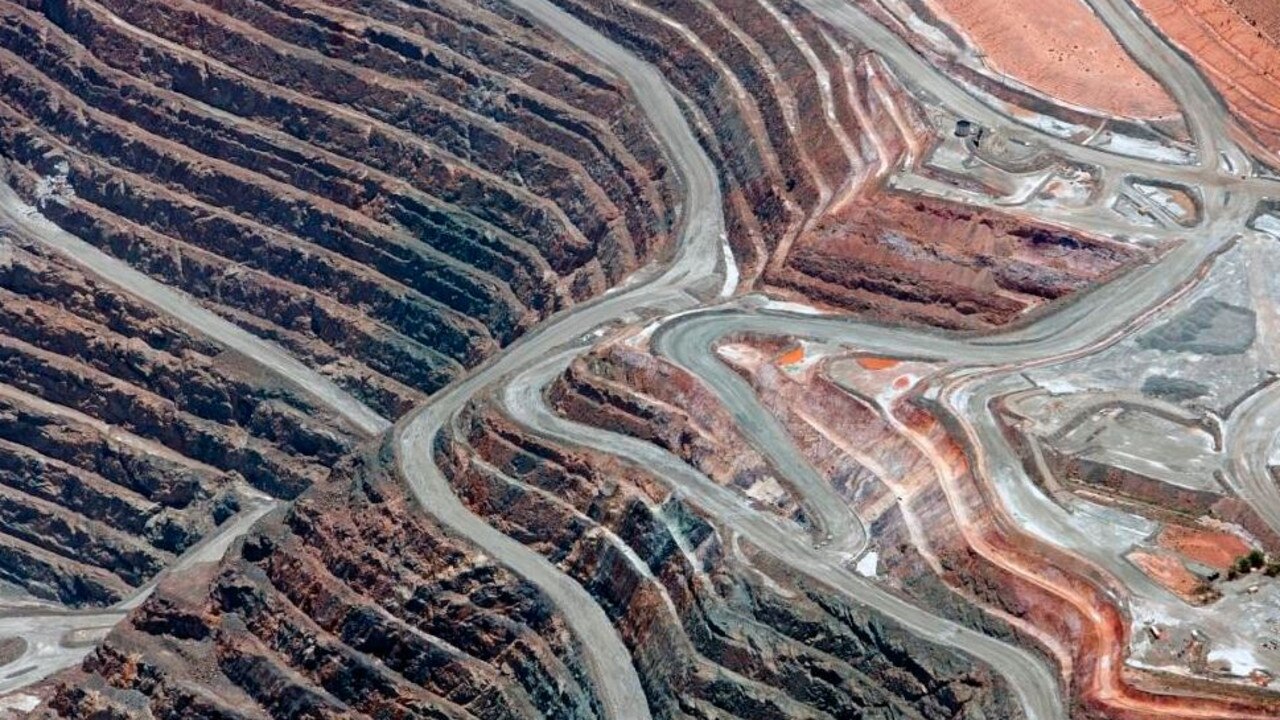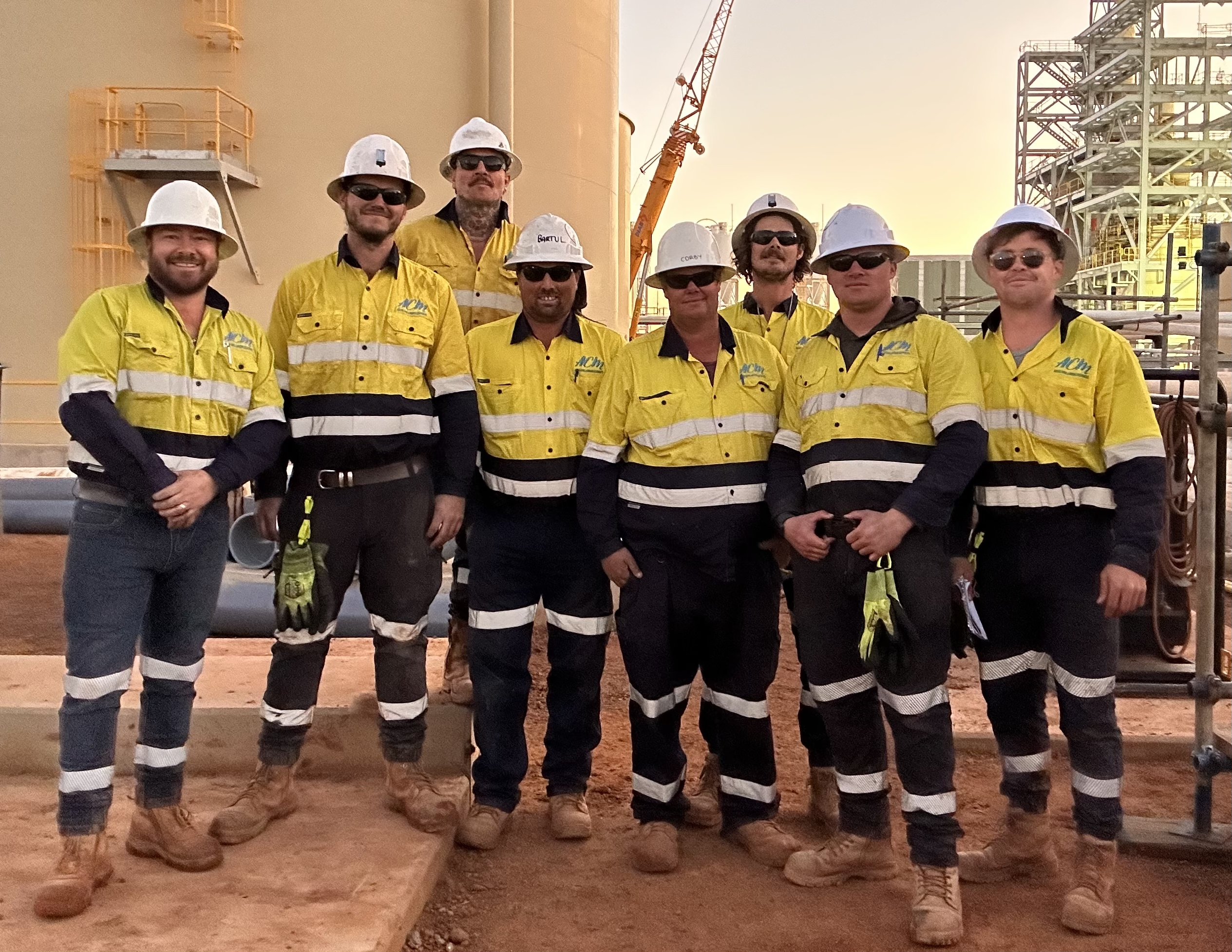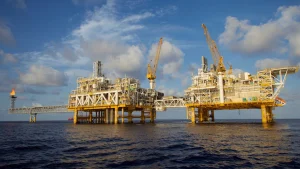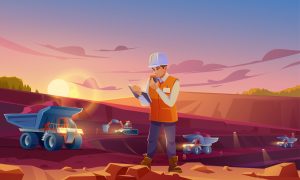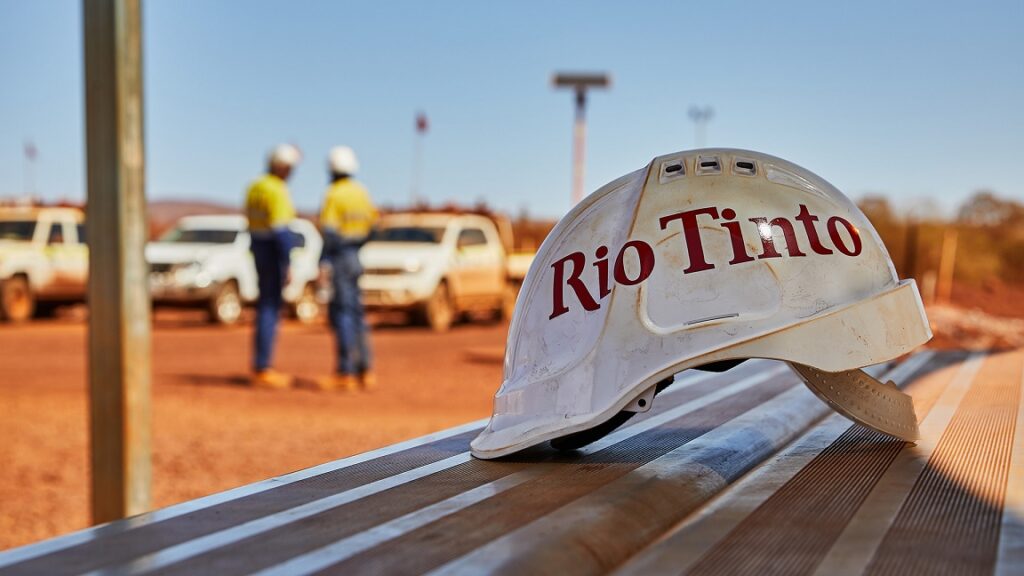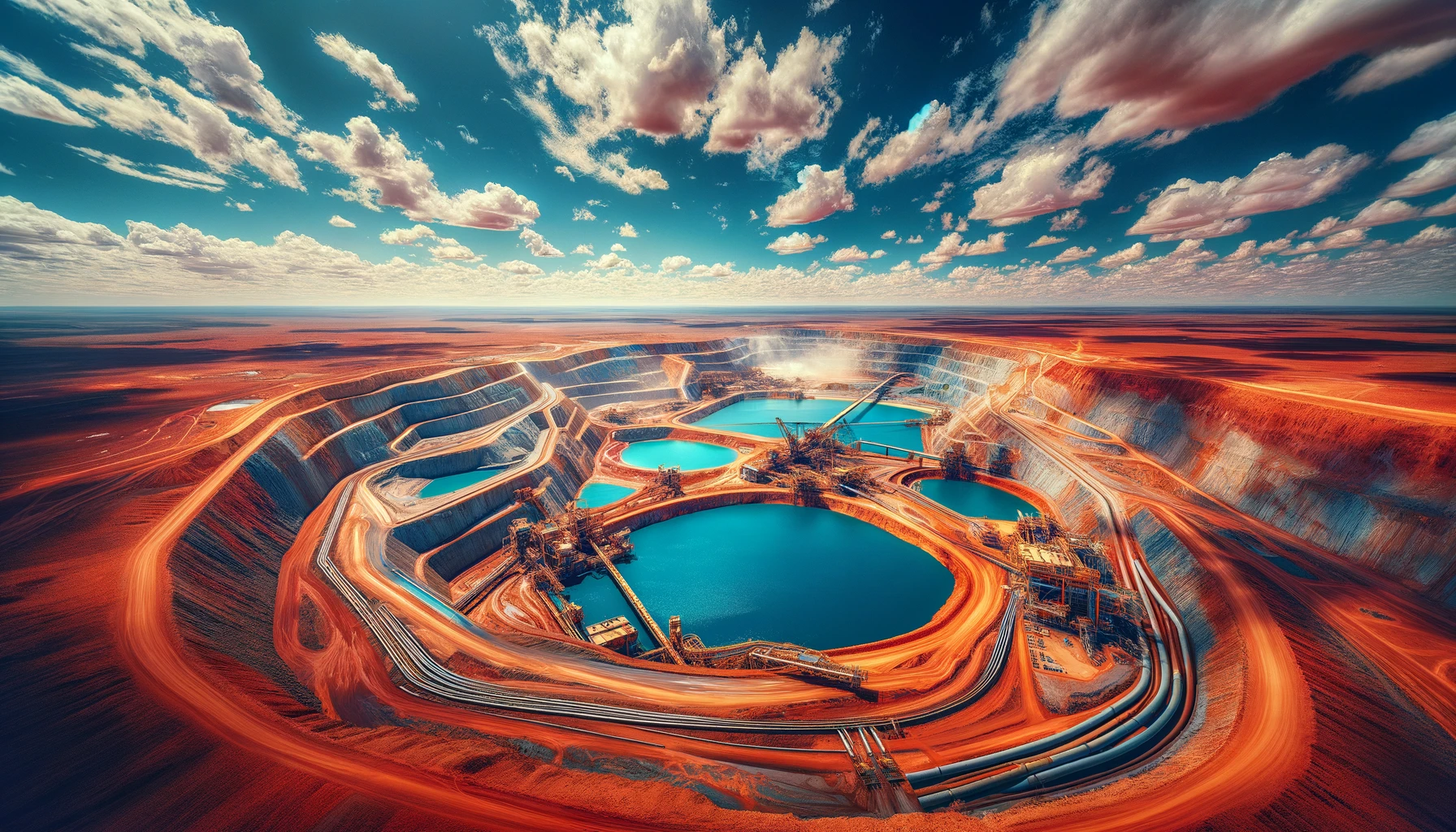
West Musgrave
The Project is located in the Musgrave Province of Western Australia and includes the Nebo and Babel nickel-copper deposits and the Succoth copper deposit. The area is highly prospective for nickel and copper and the West Musgrave Project can unlock this exciting new mineral province.
OZ Minerals is a global, copper-focused ASX 100 company with assets and growth opportunities across the world. We currently have two operating mines in South Australia, the West Musgrave project in Western Australia, an operating mine and a mine under construction in Brazil, and a pipeline of earn-in agreements with experienced exploration companies throughout Australia and internationally.
The West Musgrave Project is a major copper–nickel sulphide deposit located in the Musgrave Province. The Project’s Pre-Feasibility Study has confirmed it can be a low carbon, low cost, long life mine producing copper and nickel, both in-demand minerals for the renewable and electrification industries. The further Pre-Feasibility Study update saw an uplift to the scale and value of the project, with improvements to key Project metrics while maintaining the 26-year mine life. OZ Minerals is also investigating innovative off-grid renewable power and processing solutions, underpinned by up to 80 per cent renewable electricity generation from solar and wind for the Project. The Project will contribute to social and economic benefits for regional communities and the State of Western Australia.

Iron Bridge Magnetite Project
Magnetite mine. Operated by Fortescue Metals Group. Iron Bridge, also commonly called North Star (North Star and Glacier Valley are the names of the ore bodies), is 110 kilometres south of Port Hedland, and 45 kilometres east of the Great Northern Highway, roughly on the same latitude as the Wodgina tantalite mine.
Project owner: IB Operations Pty Ltd, as agent for Iron Bridge Joint Venture between FMG Magnetite Pty Ltd and Formosa Steel IB Pty Ltd
Project Details:
The Iron Bridge Magnetite Project (Project) is for the development of a new magnetite mine (including processing and transport facilities) and associated infrastructure at the Iron Bridge Magnetite Project site to deliver 22 million tonnes per annum (mtpa) of high grade 67% Fe, magnetite concentrate product. The Iron Bridge site comprises the world class North Star and Glacier Valley magnetite ore bodies, located 145km south of Port Hedland.
First production is expected by December 2022, with ramp up to full production run rate in 12 to 18 months.
IB Operations is seeking expressions of interest from suitably qualified contractors and suppliers for Project tendering opportunities on the ICN Gateway.
Scope Overview:
The Project scope will require the establishment of new facilities, including:
- mine
- ore processing facility
- slurry and return water pipeline
- raw water pipeline
- port infrastructure
- non-process infrastructure, such as airstrip, village extension, telecommunications networks, electricity, water, sewage, and wastewater facilities.
The Iron Bridge Project will be operated by IB Operations Pty Ltd, as agent for the Iron Bridge Joint Venture between FMG Magnetite Pty Ltd and Formosa Steel IB Pty Ltd. IB Operations Pty Ltd is an Australian private company, which is owned by FMG Magnetite Pty Ltd and Formosa Steel IB Pty Ltd, each a participant in the unincorporated Iron Bridge Joint Venture.
Local and Indigenous participation:
In line with Fortescue’s commitment to supporting local Western Australian communities, requirements relating to the engagement of local and Indigenous vendors will be included in the selection criteria for the Iron Bridge Magnetite Project tendering opportunities.

Scarborough Project
The Scarborough gas field is a natural gas field located in the Indian Ocean north-west of Exmouth on the coast of Western Australia. The total Contingent Resource of the Scarborough gas field is around 7.3 trillion cubic feet. Wikipedia
Woodside will develop the Scarborough gas resource through new offshore facilities connected by an approximately 430 km pipeline to a brownfield expansion of the existing Pluto LNG onshore facility (Pluto Train 2).
The proposal is to initially develop the gas field with eight subsea, high-rate gas wells, and thirteen wells drilled over the life of the Scarborough field, with all wells tied back to a semi-submersible floating production unit (FPU) moored in 950 m of water close to the Scarborough field.
The development of Scarborough will provide a boost to Western Australia, growing jobs and bringing work through the supply chain. Woodside is working closely with its key contractors to maximise opportunities for local, regional and WA businesses across the supply chain for Scarborough.
Woodside has engaged with a range of specialist contractors in the offshore, subsea and pipeline sectors to deliver the Scarborough Project, including Subsea Integrated Alliance for the engineering, manufacture, supply and installation of the subsea hardware, umbilicals, risers and flowlines scope, McDermott for the engineering, procurement, construction and delivery of the FPU, Saipem for the coating and installation of the export pipeline and Boskalis for the seabed intervention and shore crossing scope.
In Q4 2021, Woodside announced a final investment decision for the Scarborough Project. Woodside has issued Full Notice to Proceed to key Scarborough contractors.
Contractor Details
McDermott Australia Pty Ltd https://www.mcdermott.com/Suppliers
Subsea Integration Alliance https://www.subseaintegrationalliance.com/contact-us\
Saipem Australia Pty Ltd SaipemProc.Au@saipem.com
Intecsea Pty Ltd http://www.intecsea.com/contact/
Boskalis Australia Pty Ltd https://australia.boskalis.com/contact/head-office-contact-details.html

Mardie Salt & Potash Project
Mardie Minerals Pty Ltd (Mardie) is a wholly owned subsidiary of BCI Minerals Limited (BCI). The Mardie Salt & Potash Project (the Project) is located within Australia’s major salt producing region on the West Pilbara coast. The Project is proposing to be Australia’s first to produce salt and Sulphate of Potash (SOP) through the evaporation of seawater. The evaporation production process is powered largely through natural solar and wind energy, meaning sustainable supply of salt and potash. The Project will produce high purity salt that will be used mainly within the chemical manufacturing industry. SOP will be used as a premium fertiliser to improve plant growth and drought resistance.
The Project includes the following components;
· large scale earthworks associated with construction of evaporative ponds, salt crystallisers and
SOP crystallisers
· salt wash and stockpile facilities
· SOP production and storage facility
· new accommodation Village
· non process infrastructure
· port marine structures – 2.5km Jetty
· dredging
· power station and gas pipeline
· production water and associated pumping
· communications infrastructure
· potable water supply and reticulation
· medium haulage and light vehicle roads
· upgrades to existing water feed infrastructure
It is a BCI Minerals requirement that standards utilised are either Australian or internationally recognised equivalents, unless otherwise justified due to specific technological, commercial, intellectual property or similar requirements. All invitations to tender, tender and contract document references will stipulate required standards requirements. In certain circumstances, materials specifications in tender documents may be met by using either Australian or internationally recognised standards. The Project is committed to local and indigenous engagement according to the Project’s approved Australian Industry Participation plan (summary publicly available).
The anticipated project delivery schedule will be approximately four years, subject to the necessary approvals.

Pilbara Generation Project
The Pilbara Generation Project (Project) will enhance Fortescue’s existing power generation capacity through the inclusion of 150MW of gas fired reciprocating engine-based power generation, together with 150MW of solar photovoltaic (PV) generation and 50MW of battery storage and will be constructed, owned and operated by Fortescue through its subsidiary Pilbara Energy (Generation) Pty Ltd.
The Pilbara Generation Project complements the Pilbara Transmission Project, which consists of 275km of high voltage transmission lines connecting Fortescue’s existing mine sites.
Together, the Project and the Pilbara Transmission Project, form the Pilbara Energy Connect (PEC) which
· leverages Fortescue’s existing gas pipeline and latent generation capacity at the Solomon Power Station;
· will provide Fortescue with a hybrid solar gas energy solution;
· will enable Fortescue to supply additional power to be delivered to its mine sites; and
· supports the incorporation of additional large-scale renewable energy in the future.
Scope Overview:
The Pilbara Generation Project will require the:
· establishment of a Thermal Power Station to connect to the existing Solomon Power station;
· establishment of Solar PV Generation to generate power and connect to the transmission network; and
· establishment of a Battery Energy Storage System to connect to the Pilbara Transmission Network.
Indicative Timeline:
Construction activities are expected to commence as follows:
· Thermal Power Generation is scheduled to commence in August 2020.
· Battery Energy Storage is scheduled to commence in June 2021.
· Solar PV Generation is scheduled to commence in April 2021.

Jansz-Io Compression
Opportunities listed below are for Chevron Australia Pty Ltd packages specifically for Janz-Io Compression. Australia-wide contracts utilised for Jansz-Io Compression will be listed on the Chevron Australia Operations page.
Project Description
The Chevron Australia operated Gorgon Project is one of the world’s largest natural gas projects and the largest single resource development in Australia’s history. The Jansz-Io Compression (J-IC) Project objective is to unlock low pressure reserves from the Jansz-Io reservoir and maintain plateau production rates to the Gorgon Project facilities on Barrow Island (BWI). The J-IC Project is therefore an upgrade to an existing facility.
The development will comprise of two subsea compression stations connected via a manifold structure to the Jansz-Io Midline Pipeline Termination Structure and the installation of the following supporting infrastructure:
· New power generation capacity (as required) and cross-island High Voltage (HV) power cables on BWI;
· Offshore (subsea) HV cables; and
· Field Control Station (FCS), an offshore normally unattended installation semi-submersible electrical and controls distribution platform.
For more details of the project visit Chevron website: https://australia.chevron.com
The Project is Operated by Chevron Australia Pty Ltd (Operator) on behalf of the Gorgon Joint Venturers and the Jansz-Io Unit Joint Ventures.
1) the Gorgon Joint Venturers being: Chevron Australia Pty Ltd; Chevron (TAPL) Pty Ltd; Shell Australia Pty Ltd; Mobil Australia Resources Company Pty Ltd; Osaka Gas Gorgon Pty Ltd; Tokyo Gas Gorgon Pty Ltd; and JERA Gorgon Pty Ltd; and
2) the Jansz-Io Unit Joint Ventures being the same parties as the above.
Project Location
The Jansz-Io gas fields are situated approximately 190 kilometres offshore and Barrow Island (BWI) approximately 70 kilometres off the north-west coast of Western Australia.

North West Shelf Subsea Tieback Program
The North West Shelf (NWS) subsea tieback (SSTB) program is focused on using existing infrastructure to develop reserves from existing and undeveloped NWS Project fields.
The NWS SSTB program will use the same types of equipment, methodology and approach to contracting to develop these fields that will connect into the NWS Project’s existing offshore infrastructure.
The principal NWS Project oil and gas fields are located about 125 kilometres north-west of Karratha, Western Australia in water depths ranging between 80 and 131 metres, covering a total area of 3,134 square kilometres.
Current appraisal and development activities are focused on opportunities close to existing infrastructure.
Offshore, the North Rankin Complex, the Goodwyn A platform (GWA) and the Angel platform dehydrate the raw hydrocarbons for export via a dual subsea pipeline system to the Karratha Gas Plant (KGP).
The NWS Project’s onshore KGP consists of five LNG trains and a domestic gas plant and is located on the Burrup Peninsula of North Western Australia, near the town of Karratha. The KGP processes raw dehydrated gas and exports LNG, condensate and LPG via ship together with conditioned gas via the domestic gas pipeline.

West Angelas Deposits C&D
The West Angelas mine is an iron ore mine located in the Pilbara region of Western Australia, 110 kilometres North West of Newman. The mine is owned by Robe River Iron Associates and operated by Rio Tinto Iron Ore and is one of twelve iron ore mines the company operates in the Pilbara. Wikipedia
EPCM: Rio Tinto has appointed Worley Services Pty Ltd as the projects Engineering, Procurement, Construction Manager (EPCM). All major agreements will be with Rio Tinto directly.
Project Details
The expansion of the existing West Angelas iron ore mine site to provide a replacement source of iron ore to sustain current capacity and enable the continued operation of the existing processing plant, stockyards and rail loop that link the mine to the Rio Tinto Pilbara network.
The Project includes;
• Rom pad;
• New primary crushing facility and discharge conveyor;
• Modifications to existing processing infrastructure;
• HV re-fuelling facility (including overland diesel pipeline);
• Secondary crushing facility upgrade;
• New surge bin facility;
• Overland conveyor to existing processing plant (approx. 10km);
• Power supply upgrades;
• Dewatering and water infrastructure;
• Gas pipeline realignment (approx. 10km);
• New non-process infrastructure;
• Diversion drains and levees;
• Heavy and light vehicle road networks;
• Extending existing communications infrastructure; and
• Temporary construction accommodation.
It is a Rio Tinto requirement that standards utilised are either Australian or internationally recognised equivalents, unless otherwise justified due to specific technological, commercial, intellectual property or similar requirements. All requests for proposal (RFP), tender and contract document references will stipulate any standards requirements. In certain circumstances, materials specifications in RTPs may be met by using either Australian or internationally recognised standards. Otherwise it is the project’s intent that standards specified in RTPs do not seek to exclude Australian business from participating in Tier 1 supply opportunities.
Construction will provide employment for over 600 personnel (at peak).
Project Documents
- The Way We Work – Click here to view document
- Supplier Code of Conduct – Click here to view document
- Rio Tinto Business Integrity Standard – Click here to view document

Gorgon Stage Two (GS2)
Opportunities listed below are for Chevron Australia Pty Ltd packages specifically for Gorgon Stage 2 (GS2). Australia-wide contracts utilised for GS2 will be listed on the Chevron Australia Operations page.
Project Description:
The Chevron Australia operated Gorgon Project is one of the world’s largest natural gas projects and the largest single resource development in Australia’s history. GS2 is an upgrade to the Gorgon Project’s existing subsea petroleum facilities. Further wells and subsea infrastructure are to be added to the existing Gorgon and Jansz-Io Fields to maintain future gas supply for the Project.
The following is currently included in the scope of GS2:
- Wells and subsea infrastructure through Gorgon main production pipeline (infill development of Gorgon Manifold 1 and development of Gorgon Manifold 4); and
- Wells and subsea infrastructure through Jansz-Io main production pipeline (development of Jansz-Io Drill Centre 3 manifold).
For more details of the project visit Chevron website: https://australia.chevron.com
The Gorgon Project is operated by Chevron Australia and is a joint venture of the Australian subsidiaries of Chevron (47.3 percent), ExxonMobil (25 percent), Shell (25 percent), Osaka Gas (1.25 percent), Tokyo Gas (1 percent) and JERA (0.417 percent).
Project Location:
The Gorgon and Jansz-Io gas fields located within the Greater Gorgon area, between 130 and 200 kilometres off the northwest coast of Western Australia.


